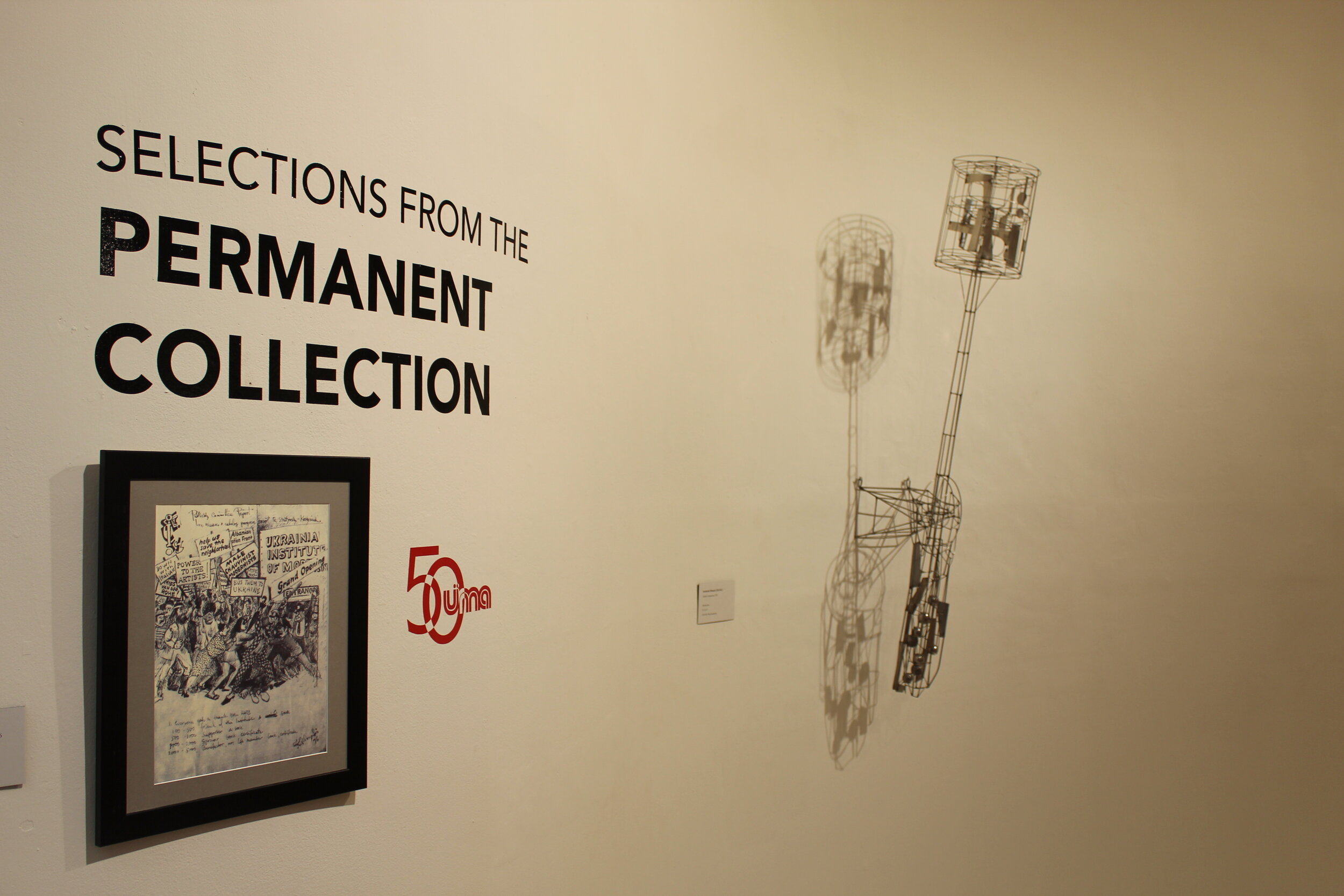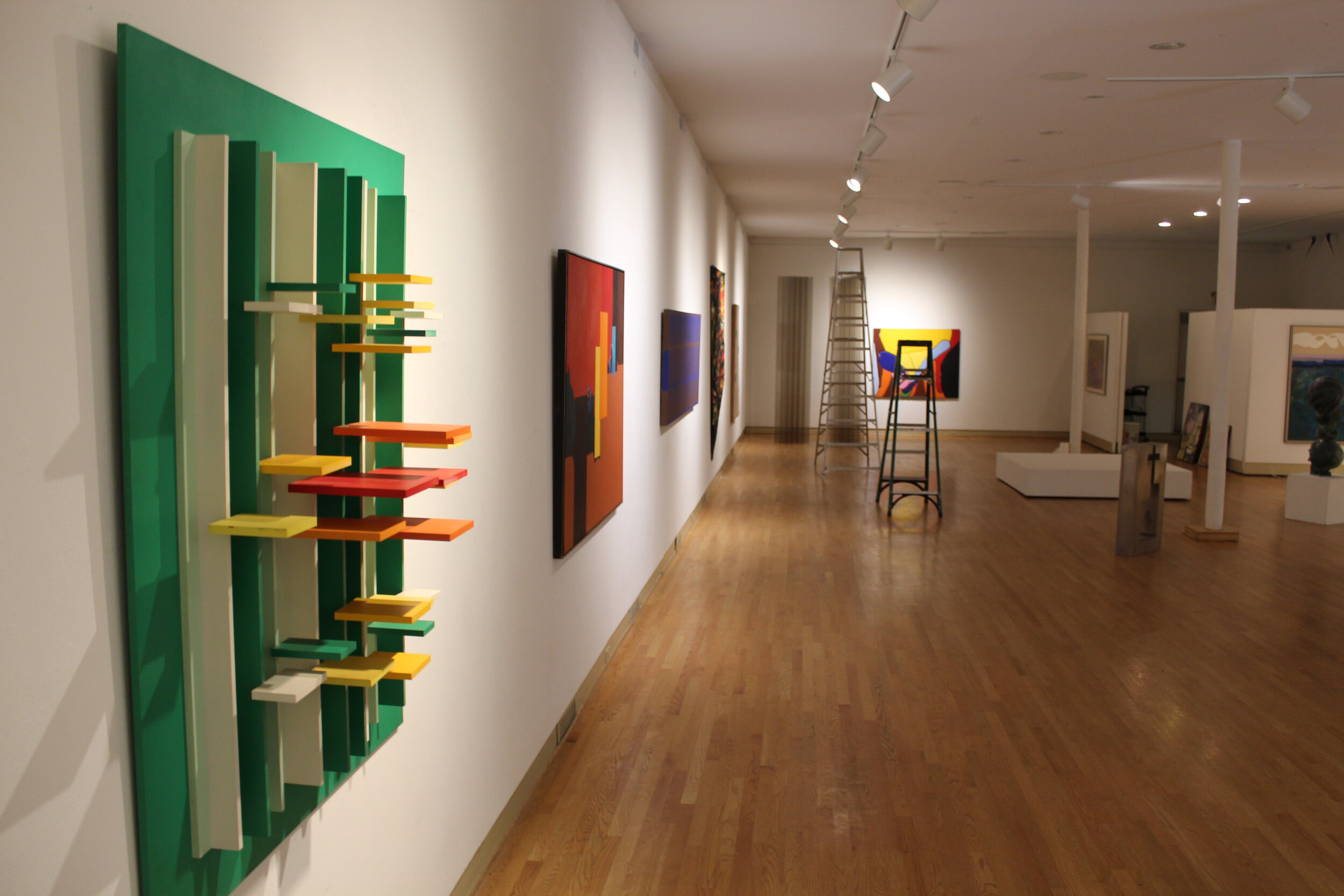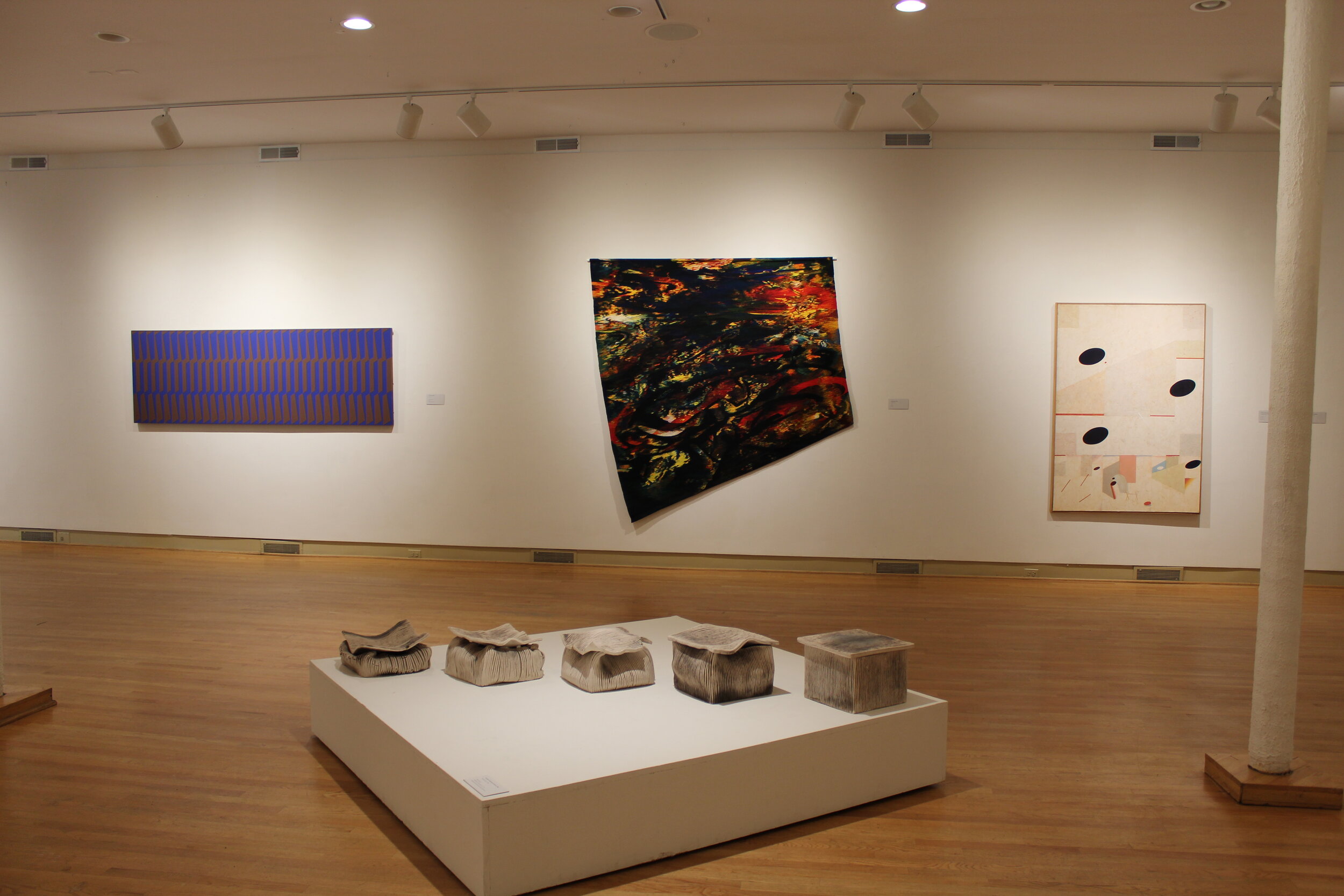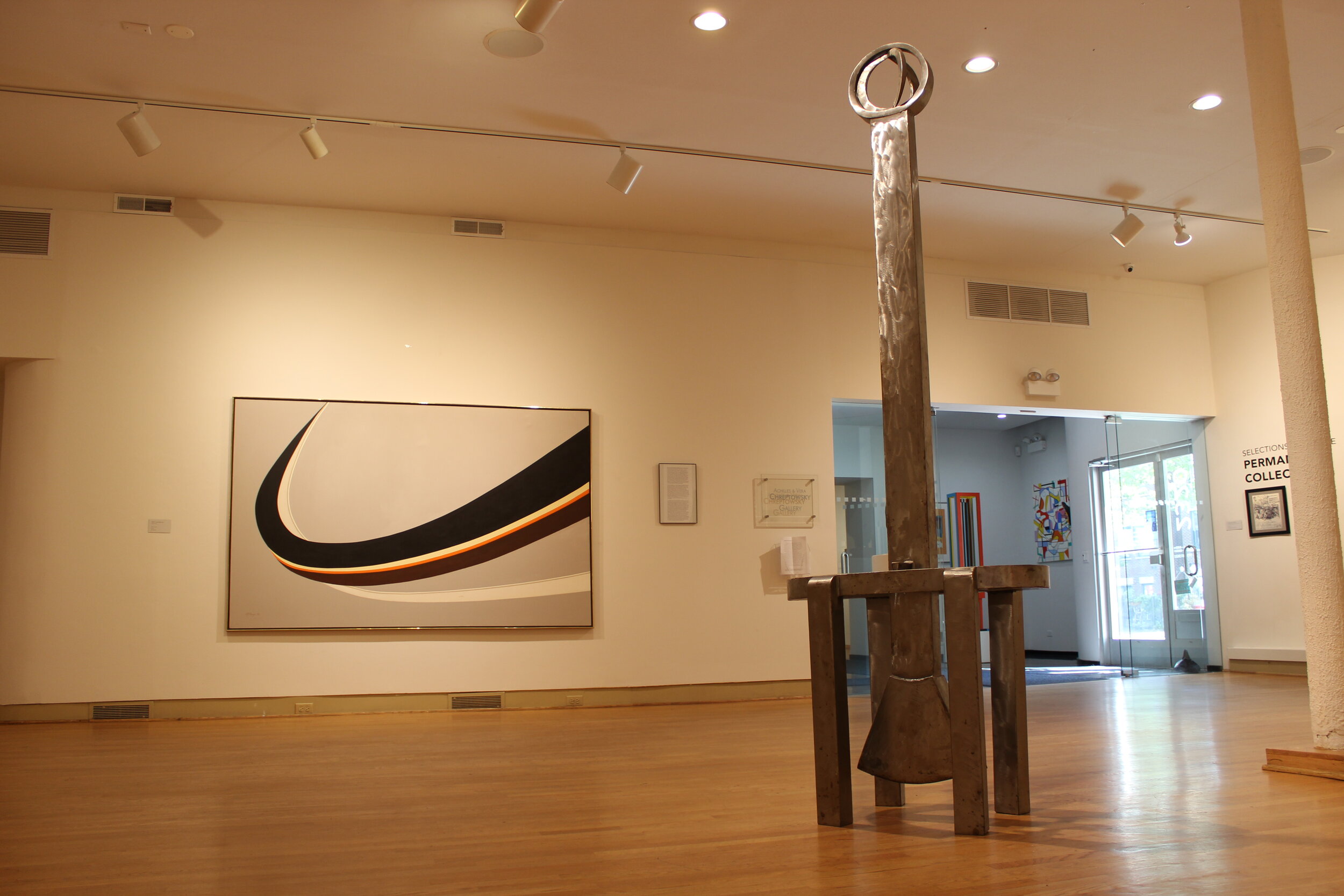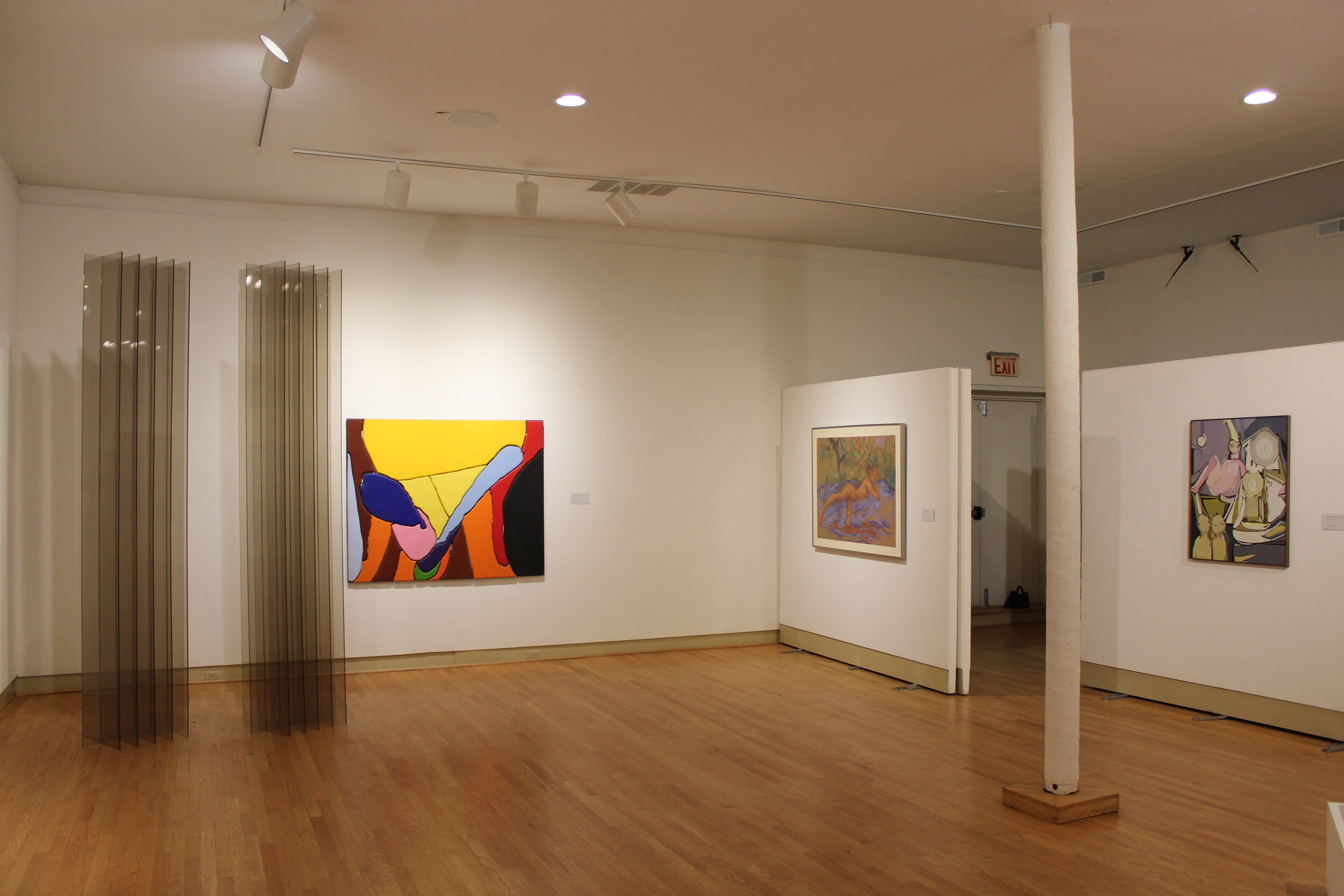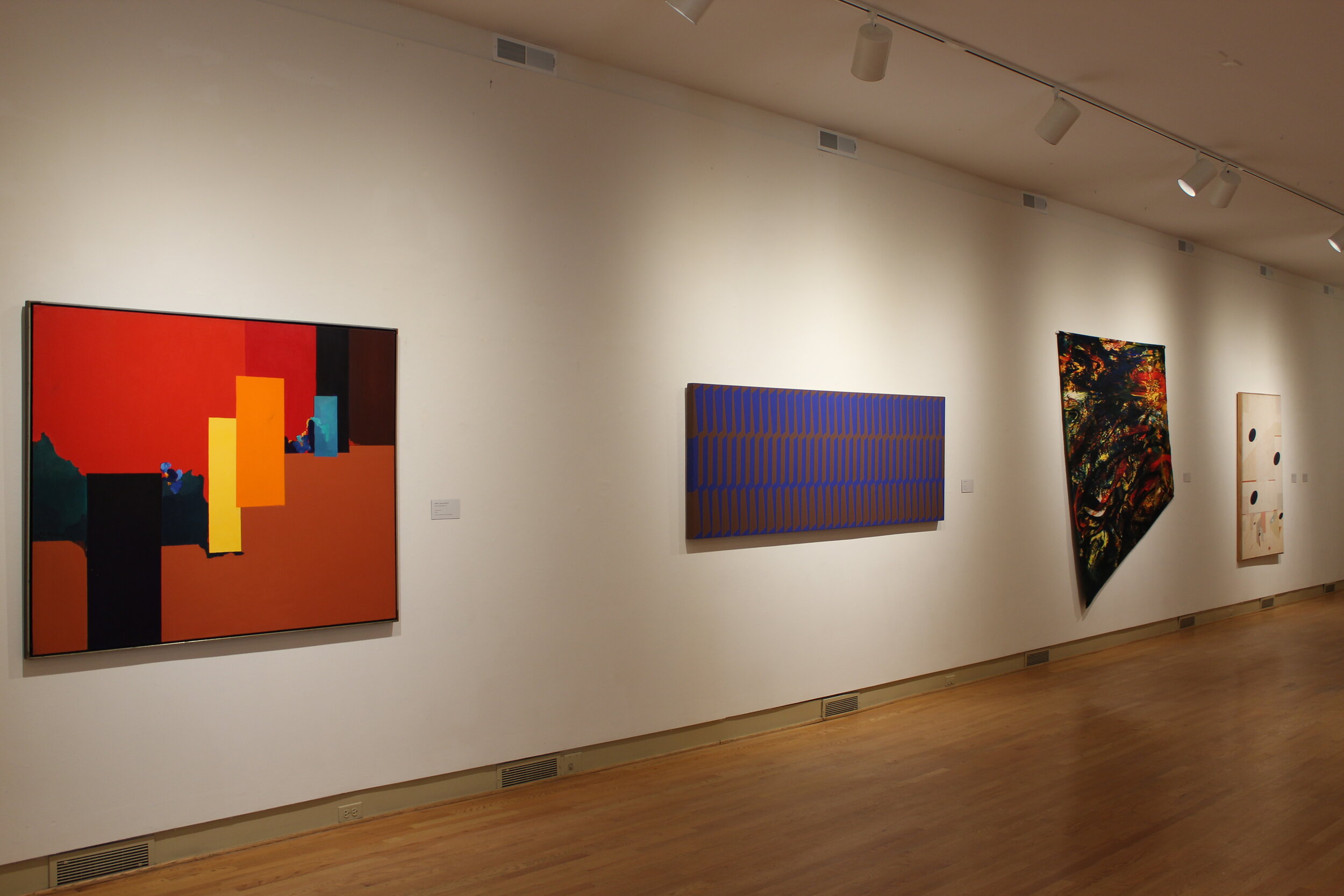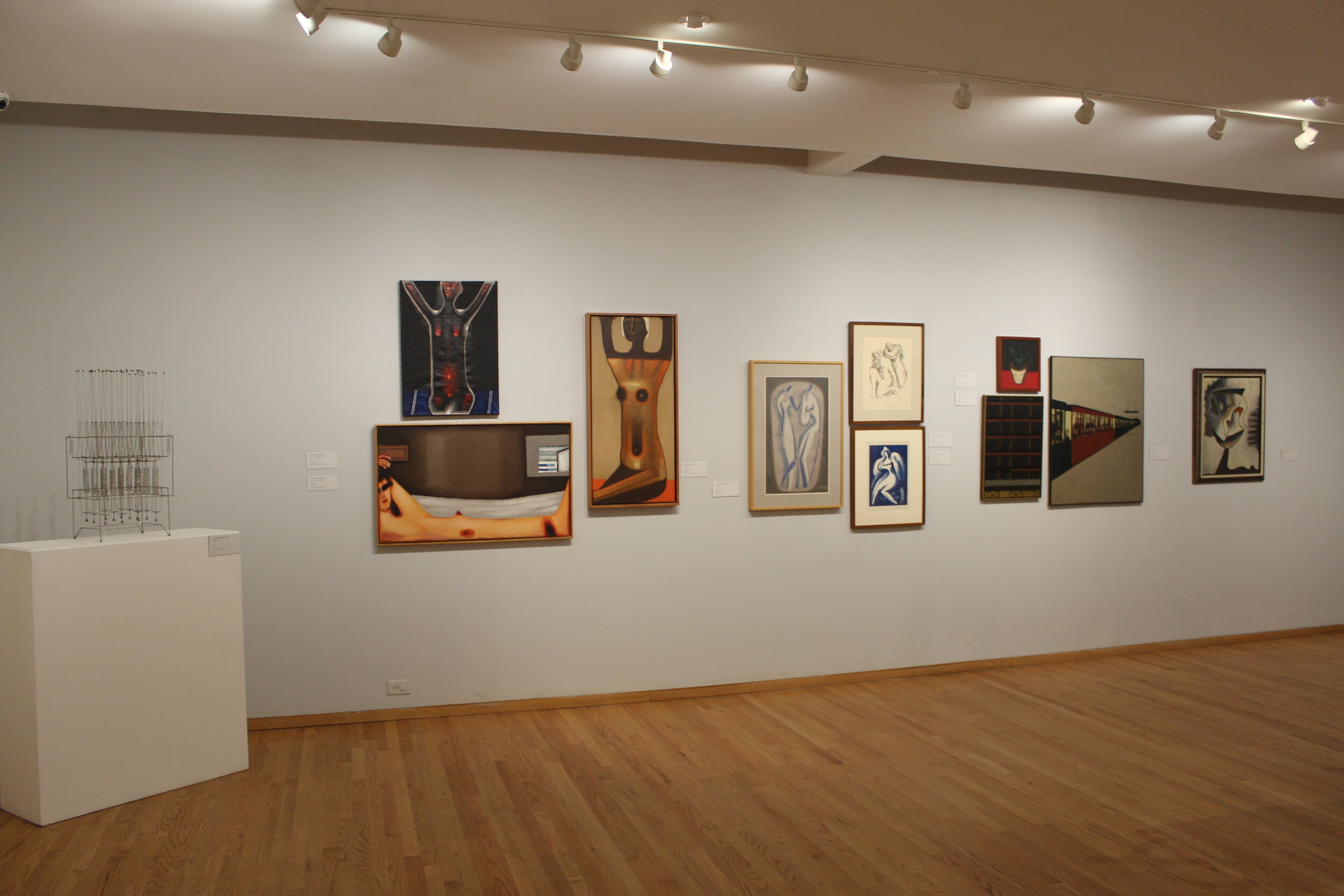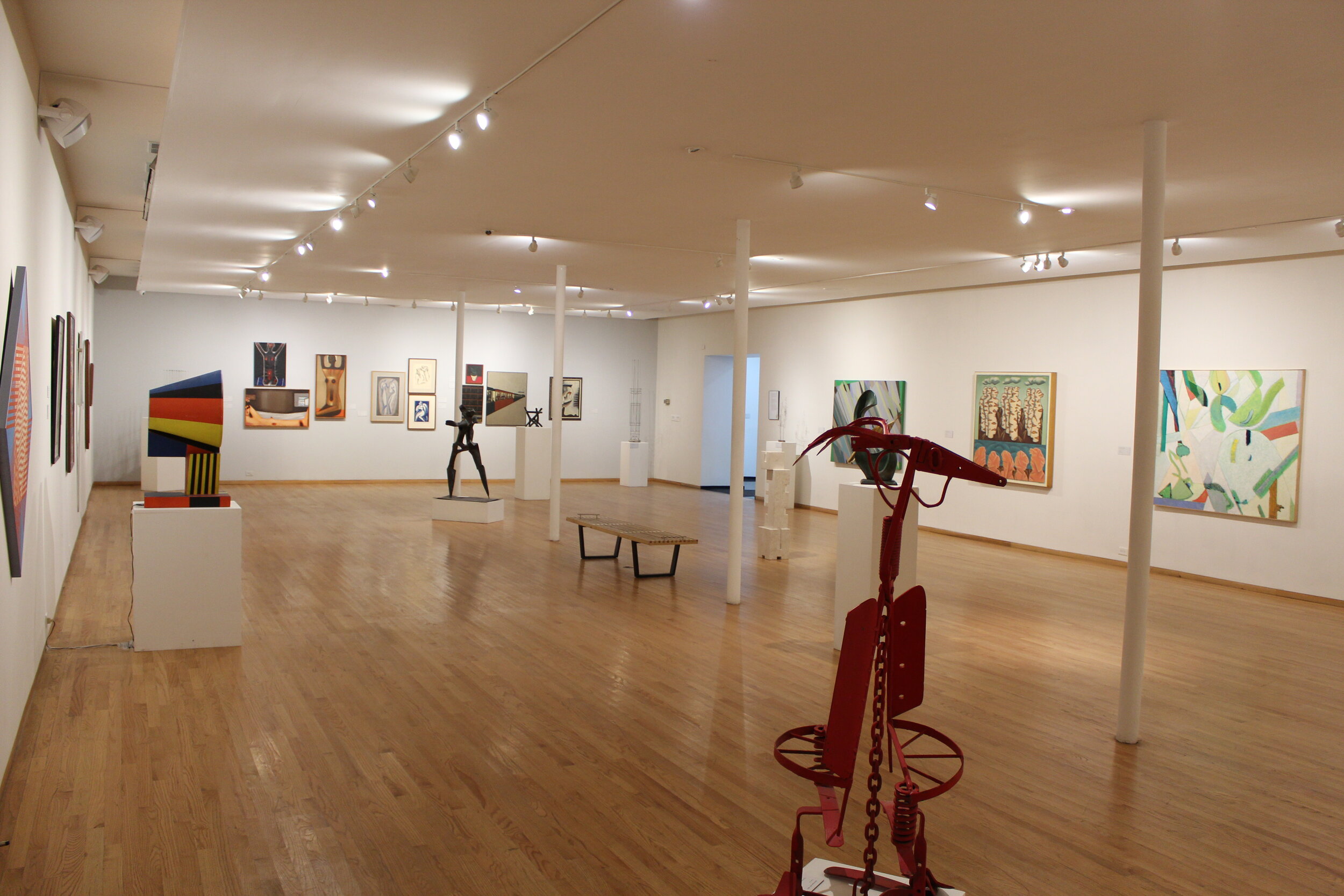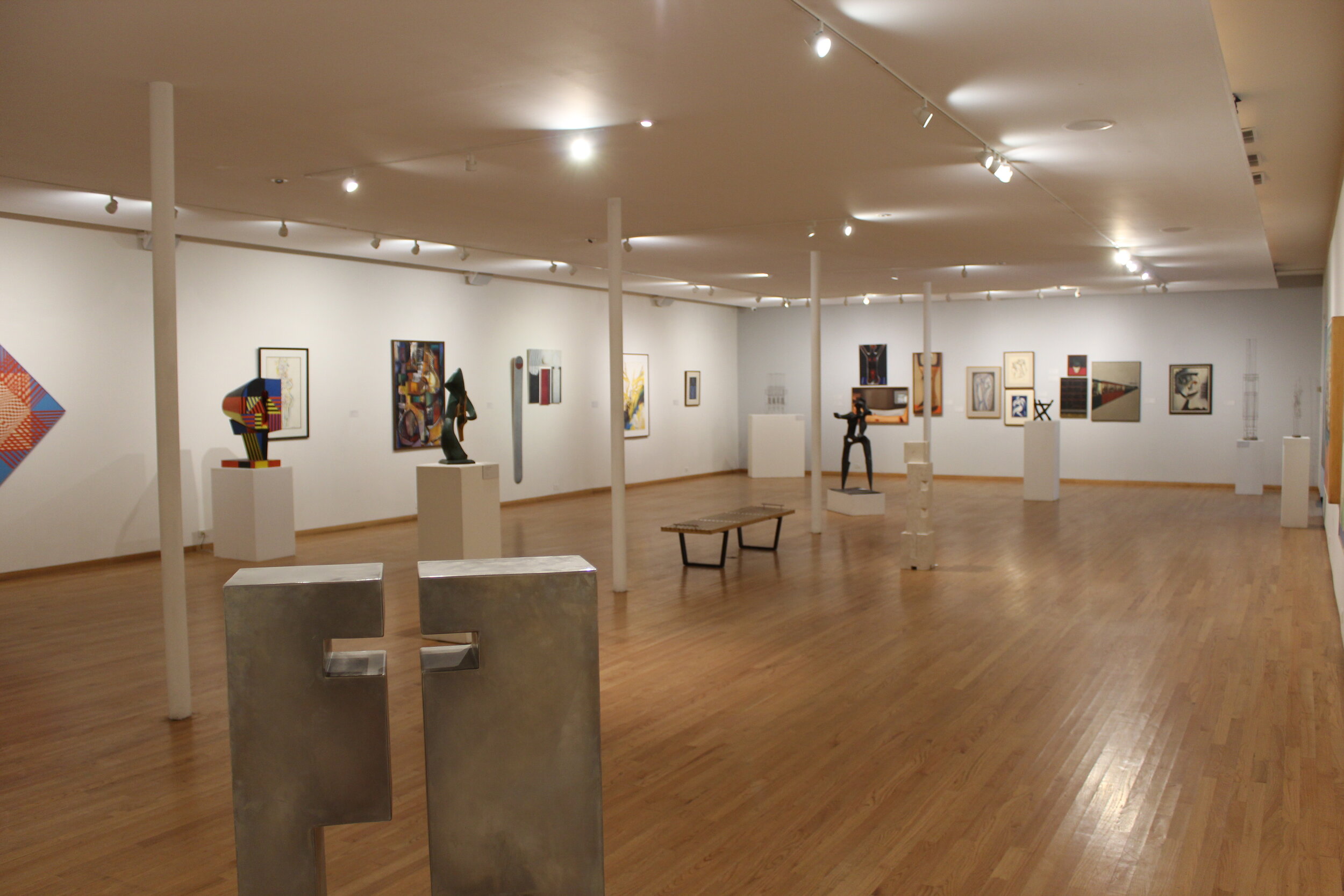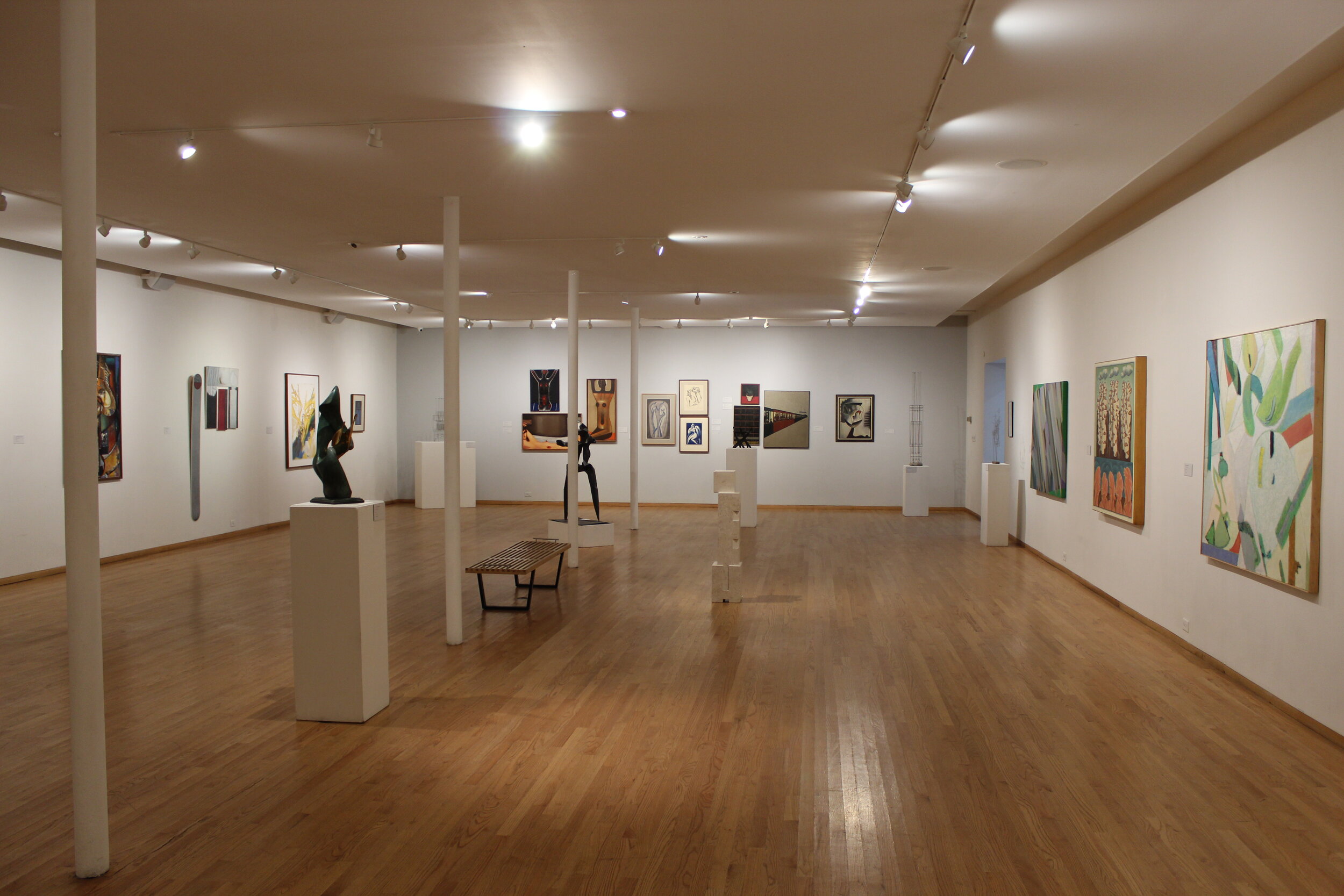
Selections from the Permanent Collection
In Honor of 50 Years
Selections from the Permanent Collection features a small sampling of the approximately 1200 works held by UIMA. Begun in 1972 just months after the Institute’s 1971 founding, it has grown to showcase contemporary artists of Ukrainian descent as well as those from Chicago. In the early years, works were acquired from exhibited artists, through purchase grants awarded by such organizations as the Illinois Arts Council, raised internal funds and occasionally donation. As a result, the collection offers insight into UIMAs early exhibition history, covering a diverse range of subjects - from the formalist concerns of minimalist sculpture, geometric abstraction in painting, and conceptual craft and fiber, to subjects addressing political protest, humor, and the age-old issues centered on artistic hierarchies, particularly, what is art and who can be an artist. For example, does one require art school training; is it art if the object is simply found on the street and presented differently in a museum setting; how do we attribute artistic meaning to such common techniques as cell phone photographs?
Works in both galleries are loosely divided, their installation taking into account aesthetic harmony, scale, and the relationship of the artworks themselves to each other. Overall, the works in the west gallery feature UIMAs earliest exhibited artists. Lida Petruniak Colucci, Lialia Kuchma, Alexandra Kowerko, Arcadia Olenska-Petryshyn, Aka Pereyma, and Alexander Hunenko, are among those who exhibited with UIMAs progenitor exhibition group Vasah lead by Mychajlo Urban and Konstantin Milonadis. Vasah, meaning salt cart in Ukrainian, referred to the salt seller's secondary role as disseminator of information. Travelling from village to village, he not only sold salt and other goods, but brought the latest news from places afar. The concept of the 'latest news' was embodied in UIMAs founding purpose - to showcase contemporary art and exhibit it in Chicago's Ukrainian neighborhood, where no such venue existed.
An homage of sorts to Urban, Milonadis and UIMAs first curator Wasyl Kacurovsky is paid on the curved feature wall. Urban and Milonadis's worked tirelessly organizing small art exhibitions since the late 1950s in Chicago and vicinity neighborhoods. Their drive culminated in the founding of UIMA, of which they were an integral part, with the support of art collectors and benefactors Achilles and Vera Chreptowsky, and many others. Kacurovsky, although not an artist by profession, painted, often using mixed media, and had a keen interest in printmaking. His interest in constructivism, design principles and spirituality informed some of UIMA's exhibitions during his tenure. Ron Kostyniuk's structuralist reliefs, Ihor Dmytruk's repetitive geometric pattern paintings, David Samila's cut-out paintings, Peter Kolisnyk's minimalist acrylic sculpture, and even Michael Mandziuk's cross-section of land masses and culverts are informed by some of these ideas. Volodymyr Makarenko's Fantastique Paysage explores formal elements in an imagined landscaped during his short years in Estonia, after emigrating from Soviet Ukraine for political reasons. Finally, Alexandra Diachenko Kochman's raku-fired ceramic boxes, and Kuchma's painterly tapestry are indicative of modern clay and textile artists' refusal to be bound by the tradition of functional use in their respective media.
The east gallery and lobby include a greater mix of artists exhibited in the early years and decades later. Anatole Kolomayets and Aka Pereyma are among those shown with Vasah. Pereyma is represented by two major artistic interests: modern interpretations of ancient, pagan folk rituals, female deities, and flora and fauna; industrial metals, both found parts reassembled into a new form, such as her Goat, or new metal sheets welded into geometric forms. Irma Osadsa, like Dmytruk and Kuczer, was concerned with principles of geometry and design in painting in the late 1960s and early 70s, exhibiting with them at UIMA shortly after founding.
Jurij Solovij tended towards gestured abstraction in his images, although not exclusively. Working often through a lens of subjectivism, he depicted themes of intimacy, as in Cosmic Love, and self-reflection - through images of a single person as in his 1000 head series, images of Christ, and philosophical ideas on creation. Jacques Hnizdovsky, noted widely for his precise linear woodcuts of flora and fauna, is represented here with three paintings. His adherence to linear structure is prominent, particularly in his characterizations of urban isolation and loneliness. Painted in the late 1950s, they reflect a period of the artist's own unrest after experiencing the trauma of World War II.
Recent acquisitions to the permanent collection are displayed throughout. A generous donation by collector Bohdan Kowalsky deepened UIMAs number of works by Alexander Archipenko, Milonadis, Hnizdovsky and others, in addition to new paintings by Jerzy Nowosielski, particularly examples from his extensive series on nude women. Chicago-based artist Michiko Itatani first exhibited with UIMA decades ago. Her Cosmic Wanderlust is one among numerous works reflecting her ongoing exploration of metaphysical and physical realms, energy fields, and light paths. Additional works by long time Chicagoans Morris Barazani, Thomas Kapsalis, Richard Hunt, Nancy Plotkin, and Bruce Thorn are also showcased, among others. Another final homage is paid to architect Stanley Tigerman, designer of UIMAs facade, in his painting dedicated to the endless possibilities of geometry and structure in the Lozenge.

